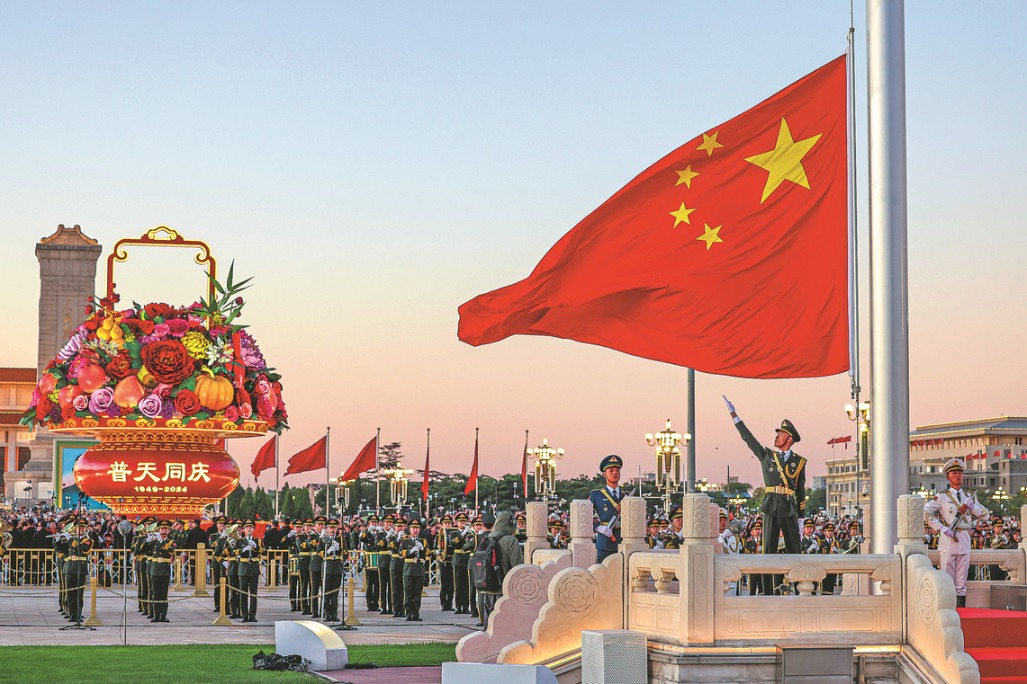Exploring China's ancient past
With easier access, US tourists invited to go beyond big cities to places like Xi'an
By MINGMEI LI in New York | chinadaily.com.cn | Updated: 2024-02-29 11:24

By enhancing the frequency of flights, easing visa-application policies and relaxing entry restrictions, China is extending a warm invitation to American travelers to explore the country.
China's provincial travel and tourism departments are highlighting destinations beyond the famous cities of Beijing or Shanghai. They are introducing US travelers to lesser-explored cities with rich historical heritages and diverse cultural traditions that are undergoing new international development.
At the same time, the United States remains a favored travel destination for Chinese travelers. Both the US and China are actively working to resume their respective travel markets to pre-pandemic levels, enticing international travelers for deeper tourism and cultural exchange, and China is looking forward to working with the US Commerce Department to resume the China-US Tourism Leadership Summit in May in Xi'an.
Xi'an, the capital of Northwest China's Shaanxi province, hosted an invitation presentation in New York on Tuesday night to showcase the city, following the recent visit of a Zhejiang province cultural delegation to New York in early February.
Xi'an, which served as the imperial capital for 14 ancient dynasties, marked the starting point of the Silk Road and is considered the "birthplace" of Chinese civilization.
"There's a widespread joke in China about the problems of Xi'an — it's impossible to build a subway system, cause wherever you dig, you run into an undiscovered terrace, so the construction team is also nicknamed, the 'archaeology team,'" said Shang Jiyuan, the cultural counselor at the Chinese Consulate General of China in New York, starting with the joke and introducing one of the most famous landmarks, the Terracotta Warriors of Emperor Qin.
Xi'an not only has much historical and cultural heritage but also has hosted state visits between China and the US and welcomed two former US presidents, Ronald Reagan in 1984 and Bill Clinton in 1998, with elaborate Tang Dynasty (618-907), grand welcoming ceremonies.
The city also has taken part in people-to-people exchanges for a long time between China and the US.
"It's a personal interest to me, not just because the province has a rich cultural history, much of which we can explore and experience today, but also its desire and interest in cultural collaboration — probably the best example," said Bob Nederlander Jr, the founder, president and CEO of Nederlander Worldwide Entertainment.
He said his father once was a host of China's national ping-pong team and helped facilitate "Ping Pong Diplomacy" in the 1970s.
The company formed the first "Sino joint venue" in the live-performance industry and has brought eight Broadway shows to more than 25 cities in China since 2005.
Collaborating with the Shaanxi Tourism Group, the company also created a show, The Sound of Silk Road, with artists from Broadway, Berlin and Beijing, telling a story from a teenage boy's eyes, traveling back in time some 2,000 years.
"We had the opportunity to bring great Chinese culture to the US, and we hope one day to share that here with American audiences, particularly Broadway," he said.
The narrative of the Silk Road also signifies the economic and diplomatic interactions of "Chang'an" (the historic name for Xi'an), onetime capital of two of China's greatest dynasties, the Western Han Dynasty (206 BC-220 AD) and the Tang Dynasty (618-907).
"I think it's important to know a place like Xian, to really understand it, to know its historical significance, and maybe also not just to think of it as sort of one quick stop on a tour, but to think of it as a place to learn about in depth," Charles Riley, the director of the Nassau County Museum of Art, told China Daily.
Riley said that as a teacher who had spent time living and teaching in China, he believes that culture is a good way to form people-to-people relationships and help both countries understand each other better.
"When it really comes down to it, longer term — art, music, culture, food — the cultural side of it is probably the strongest bridge between the two countries," he said. "As a curator, I want to bring Chinese art to the United States, and I want to take Western art to China."
"China is big, and you have to go to many places; you have that option to take. Unfortunately, the pandemic came, so we stopped (going)," Alejandro Garrido, the director of Aviajar Tours and Travel USA, told China Daily. "But I hope that now (we're) going back again for travel … going to China and China to America." He said that he is looking forward to making travel plans for his clients going to China.
"It's a good option to chat with both countries, that culture, the food, because what they have is a very important thing to share," he added.
Cathy Barbash, an art consultant, who was manager of the Philadelphia Orchestra in 1993, which made a historic trip to China in 1973, told China Daily that she has been working on China-US cultural exchanges for decades and believes that travel between the two countries will benefit both peoples.
"Xi'an is a combination of the amazing cultural heritage there and the warmth and creativity of the people," she said. "That culture is the one thing we can all agree on — that we love to learn more about each other's culture, and the warmth of that relationship continues no matter what else is happening."
Barbash said that she was happy to see the increase in flights.
"More flights and nonstops from New York to Beijing and Shanghai! That's what we need," she said.
"We are always looking for what's the new place to introduce to the US travelers, and we have such an opportunity to build that traffic and exposure for China to the US," Terry Dale, president and CEO of the United States Tour Operators Association, told China Daily.
























